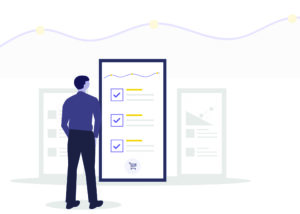How Advances in Market Research Help Transform the Patient Experience
For years, the DTC National Conference has showcased the best in direct-to-consumer Rx marketing. At the heart of DTC is the “Patient Experience,” essentially the sum total of each person’s unique journey from illness to treatment and, if the experience is successful, back to some kind of health or “new normal.”
Companies use various metrics to characterize what a good patient experience is like. Many of them are similar to a personalized eCommerce experience where buyers’ needs are met, expectations exceeded. Today’s end-users demand convenience, responsiveness, and ongoing support.
For patients, the stakes are even higher because their health and often their very lives are at risk. Healthcare brands understand this urgency, and they devote significant resources to market research with the hope of understanding patients and optimizing their healthcare experience.
Market research at its best helps pharma brands thrive by providing actionable insights into unmet needs, personal attitudes, treatment options, audience behaviors and triggers, and the effectiveness of marketing campaigns. To accomplish these goals, research agencies traditionally use a mix of qualitative and quantitative methods. But challenges persist, and hybrid approaches often fall short of the insights brands need to succeed.
Recent advances in digital technology have revolutionized market research, and healthcare brands are taking notice. Many of the techniques used by Big Tech giants like Apple, Google, and Amazon are now part of our DTC market research toolkit.
The global pandemic has accelerated progress in digital health, exemplified by increased telehealth adoption and the digitization of market research for pharma brands. From data collection to analysis and reporting, let’s take a look at how digital is changing the game.

The Digitization of Data Collection
A challenge of traditional market research is similar to that facing the health system itself: How do you collect biometrically rich and accurate data to best inform diagnostic and treatment decision making? The human body is speaking to us through data, but are we able to listen?
Patients are speaking, too, and the time has come for market research to do better than fill-in-the-blank surveys and questionnaire bubbles, unnatural interviews and focus groups, and other self-limiting formats. Even rigorous observational studies are subject to bias.
In contrast, consider the power of a patient voice recording compared to a written response from a survey or questionnaire. Patients are already sharing their thoughts and feelings about their experience with a disease state, vaccine, or treatment from their own smartphones.
Not only does a voice recording contain 100x or more data than the written word, but no data is lost or filtered during the input process. The data is also acquired conveniently, candidly, and efficiently, and in a manner that can seamlessly and relatively rapidly scale to need.
Unlike eye-tracking widgets, heat mapping, and other tech, voice offers a comprehensive window into the thoughts and feelings of your patients. By letting them speak for themselves, researchers can listen to the unfiltered essence of what’s on patients’ minds.

A Human & Machine Approach to Data Analysis
After market research data is collected, the information must be analyzed to extract actionable insights. For quantitative research, the application of complex mathematical algorithms is usually involved; for quantitative, human researchers take a much more subjective, and often laborious, approach.
Given these differences between quant and qual data analysis, brands again feel tradeoffs are necessary: mountains of quant data is anonymized and statistically processed for generalized insights, while more dimensional, deeper data sets from smaller qual samples are extrapolated for more nuanced analysis of smaller sample sizes.
Innovative voice technologies offer a better way: trained language scientists conducting qualitative analysis assisted by an AI-powered processing interface that utilizes machine learning tools. Such a hybrid approach reveals insights lost or never inputted in the first place through mere checkbox surveys.
Layering advanced sentiment analysis on top of transcribed textual responses reveals added dimensions of subtle nuance and behavioral indicators. These emotional responses reveal the why behind patient behaviors, providing pharma brands unique insights.
Learning from the likes of Big Tech, a combination of sophisticated software and human-powered analytics can reveal the underlying needs of patients and fulfil unmet expectations for an ideal experience with your pharma brand.

The Digitization of Market Research Reporting
The whole point of conducting market research is to better understand and hopefully improve their experience. Extracting key insights are just the first step – brand teams need effective recommendations to translate data into action.
From Google AdWords and Analytics to Microsoft Azure, Big Tech again leads the way. The presentation of data results in a visual, intuitive, and compelling way is the hallmark of digital supremacy, as PowerPoint decks are replaced by visual, interactive, and intuitive digital interfaces that tell stories.
Layered, dimensional output is another benefit of collecting voice data as opposed to text or other limited inputs. Voice data lends itself well to a dynamic dashboard with insights that drive action, from study design structure to endpoint recommendations to a health-literate lexicon.
The more patient biometric data you collect and analyze, the more nuanced your reporting opportunities. Being able to play original source audio files instantly connects brand teams back to their key stakeholders; hearing the subjects speaking for themselves infuses the output with transparency, credibility, and passion, which gives the research unparalleled credibility.
“Without data,” W. Edwards Deming once said, “you’re just another person with an opinion.” And without a visual, intuitive, and KPI-driven way to dynamically report actionable recommendations back to brand teams, your market research results could get lost in the noise.

Bringing the Patient Experience to Life
Adept brand stewards identify research opportunities across functional teams and the product life cycle, from clinical trials and R&D to primary and health economics and outcomes research, et al. Tailored combinations of quant and qual are the norm – now enhanced with digital.
To best understand patients and their unique needs, you need a market research approach with agility and power. The current opportunity demands a capability with the fluidity and speed of quant and the depth and dimensionality of qual. Digital innovation fills that gap.
Opportunities abound for innovative approaches, such as when patient recruitment is time consuming or tricky; you have more questions and need another layer of insights but have minimal ramp up time; or campaign stimuli need to be tested during the creative development cycle.
By harnessing the natural power of the patient’s own voice, a fresh approach to market research gives additional flexibility and strength to the arsenal of tools already at a brand’s disposal. By embracing the potential of voice for market research, the patient experience is revitalized.
When done with empathy, personalization, and innovation, market research helps explain what the optimal patient experience should be like, and it recommends how healthcare brands can assist in creating it. The digitization of market research adds to the arsenal of digital health and maximizes the power of DTC marketing.

